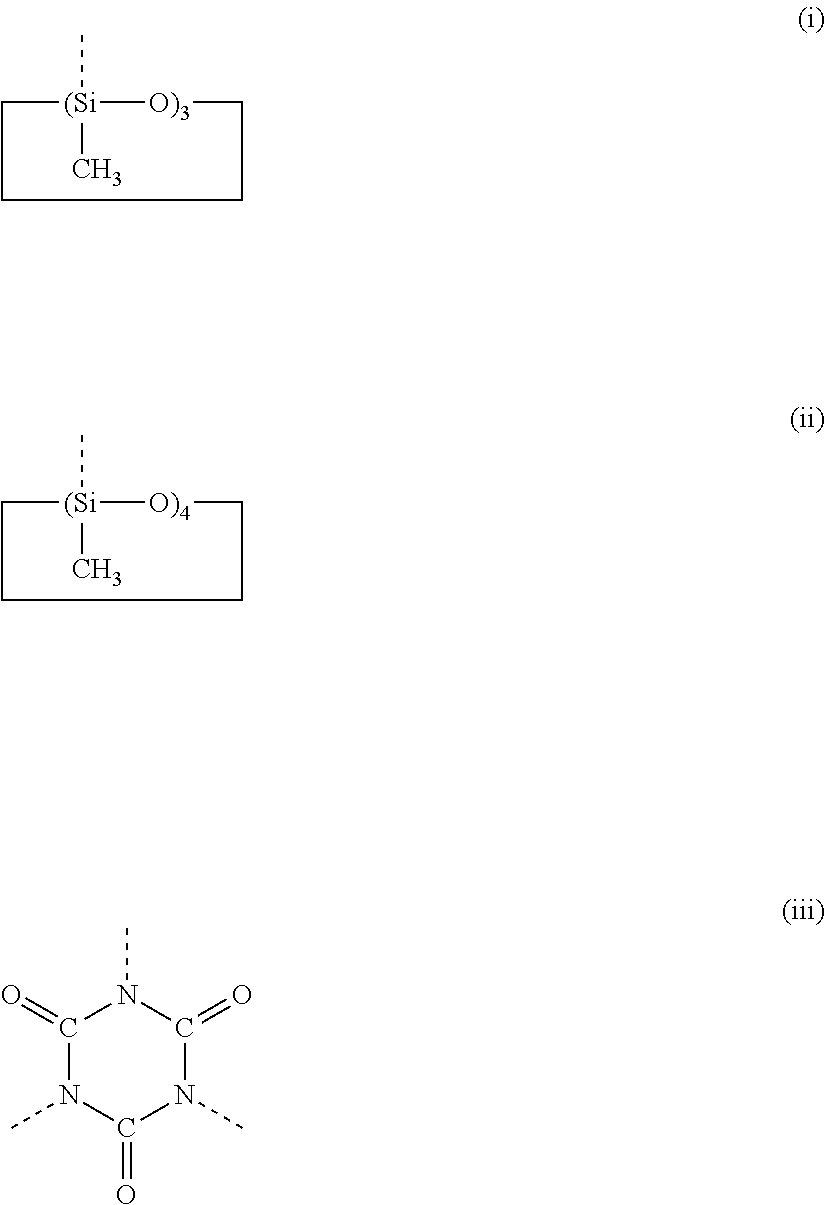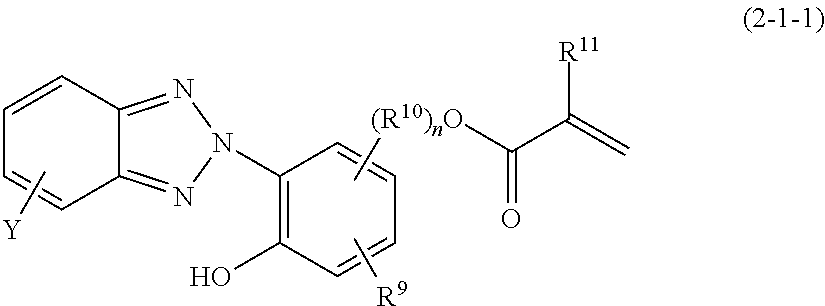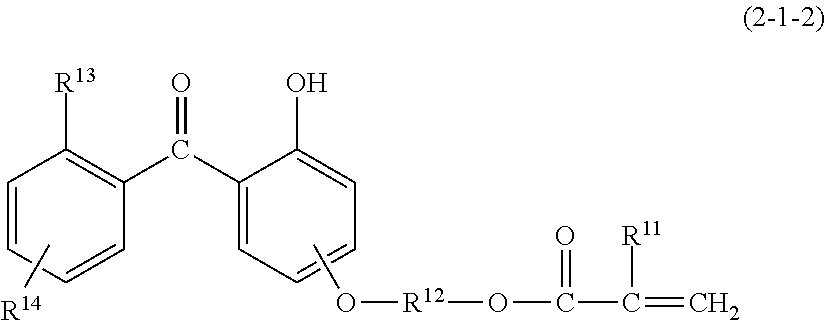Weather-resistant hard coating composition and coated article
a technology of hard coating and composition, applied in the direction of dyeing process, solid balls, sport apparatus, etc., can solve the problems of poor adhesion of the undercoating layer to the substrate, poor water resistance, solvent resistance, light resistance, etc., to improve light resistance, improve solvent resistance, and improve light resistance.
- Summary
- Abstract
- Description
- Claims
- Application Information
AI Technical Summary
Benefits of technology
Problems solved by technology
Method used
Image
Examples
synthesis example 1
[0151]In a 2-liter flask were placed 272 g (2.0 Si mol) of methyltrimethoxysilane and 15 g (0.1 Si mol) of tetramethylsilane. After cooling to about 10° C., the flask was given dropwise 211 g of “Snowtex 0” (aqueous dispersion of silica sol containing 20% SiO2 with an average particle diameter of 15 to 20 nm, made by Nissan Kagaku Kogyo K.K.) and 93 g of aqueous solution of 0.25N acetic acid for hydrolysis, with the contents of the flask cooled below 40° C. This step was followed by stirring at a temperature of up to 40° C. for one hour and then at 60° C. for three hours to complete hydrolysis.
[0152]Subsequently, the flask was given 300 g of cyclohexane and the reaction product was freed of methanol (resulting from hydrolysis) by distillation under normal pressure, with the liquid heated up to 92° C. The resulting condensate was diluted with 400 g of isopropanol, and the resulting solution was mixed by stirring with 1.6 g of acetic acid and 1.6 of 25% aqueous solution of tetramethyl...
synthesis example 2
[0154]In a 1-liter flask were placed 65 g (0.48 Si mol) of 1,2-styrenebis(trimethoxysilane), 300 g of “IPA-ST” (silica sol dispersed in isopropanol, containing 30% SiO2 with an average particle diameter of 15 to 20 nm, made by Nissan Chemical Industries, Ltd.), 100 g of isopropanol, and 2 g of “Lewatit K2649DR” (cation exchange resin, made by Lanxess K.K.). The flask was given 40 g of pure water at room temperature, followed by stirring at 40° C. for three hours to complete hydrolysis and condensation. After cooling to room temperature, the reaction product was incorporated with 170 g of acetylacetone, 6 g of aluminum acetylacetonate, and 0.1 g of polyether-modified silicone “KP-341” (made by Shin-Etsu Kagaku Kogyo K.K.) as a leveling agent. After stirring, there was obtained a silicone resin solution, containing 20.2% of non-volatile matter, having a weight average molecular weight of 1,830 with a dispersity of 1.72 determined by GPC. This solution is designated as the component (1...
synthesis example 3
[0155]The same procedure as in Synthesis Example 2 was repeated except that the 1,2-ethylenebis(trimethoxysilane) was replaced by 40 g (0.12 Si mol) of hydroxybenzophenoneoxypropyltrimethoxysilane and 19.6 g (0.12 Si mol) of 1,6-hexylenebis(trimethoxysilane). The reaction product was diluted with isopropanol so that the resulting solution contains non-volatile matter in a concentration of 20%. Thus, there was obtained a silicone resin solution, containing 19.4% of non-volatile matter, having a weight average molecular weight of 2,050 with a dispersity of 1.82 determined by GPC. This solution is designated as the component (1-c).
PUM
| Property | Measurement | Unit |
|---|---|---|
| Percent by mass | aaaaa | aaaaa |
| Percent by mass | aaaaa | aaaaa |
| Percent by mass | aaaaa | aaaaa |
Abstract
Description
Claims
Application Information
 Login to View More
Login to View More - R&D
- Intellectual Property
- Life Sciences
- Materials
- Tech Scout
- Unparalleled Data Quality
- Higher Quality Content
- 60% Fewer Hallucinations
Browse by: Latest US Patents, China's latest patents, Technical Efficacy Thesaurus, Application Domain, Technology Topic, Popular Technical Reports.
© 2025 PatSnap. All rights reserved.Legal|Privacy policy|Modern Slavery Act Transparency Statement|Sitemap|About US| Contact US: help@patsnap.com



